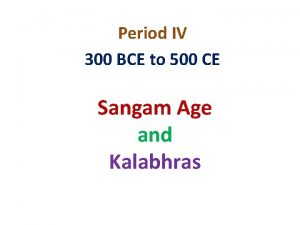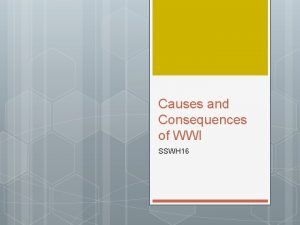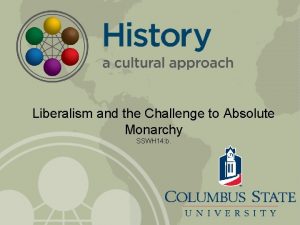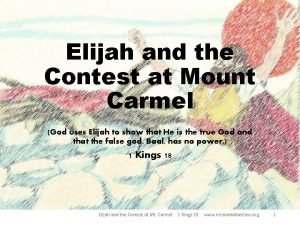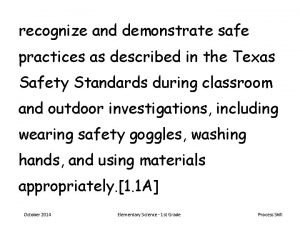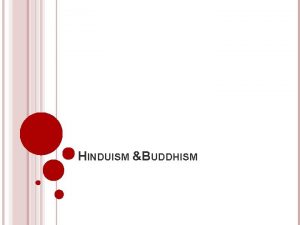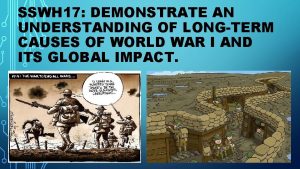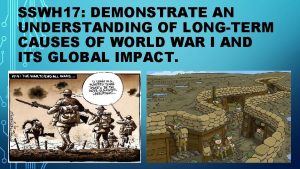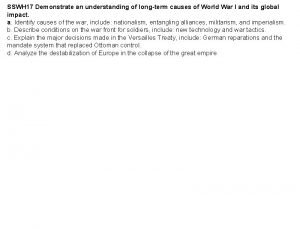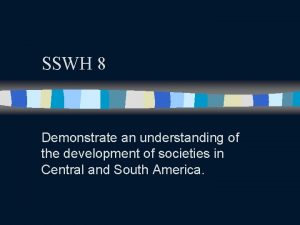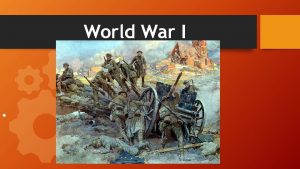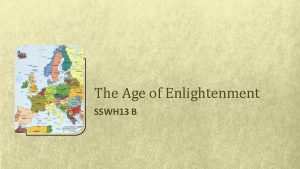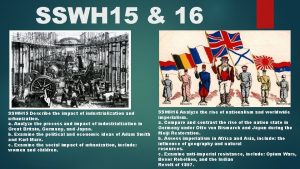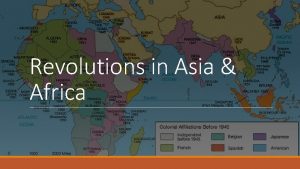SSWH 8 The student will demonstrate an understanding





















- Slides: 21

SSWH 8 The student will demonstrate an understanding of the development of societies in Central and South America. a. Explain the rise and fall of the Olmec, Maya, Aztec, and Inca empires. b. Compare the culture of the Americas; include government, economy, religion, and the arts of the Maya, Aztecs, and Incas.

In the Americas, two early civilizations existed: the Olmec, in what we know today as Mexico from 1200 to 1400 B. C. E…. .

…and the Chavin in the Andres from 900 to 300 B. C. E.

The Olmecs � � � an urban society supported by surpluses of corn, beans, and squash. Mastered irrigation techniques Constructed largescale buildings. Polytheistic Developed a system of writing and a calendar.

Not River Valleys � � � Olmec nor Chavin developed in a river valley. Had access to H 2 O, i. e. streams No major river for: Agricultural production Hub for trade/culture

Hypothesis Refutation � � � Hypothesis: River valleys are essential for the emergence of early civilizations. Disproved by Olmecs and Chavin In addition: These civilizations demonstrate that the same patterns of civilizations can develop without exposure to other

Olmec 1500 BCE – 200 CE

Meso-American Civilizations � Central American Civilizations �Olmec 1500 BCE 200 CE �Maya 2001200 CE �Aztecs 13501530

Geography � � � Yukatan Peninsula located on the hot, humid coasts of the Gulf of Mexico surrounded by rain forests, grasslands, and swamps

Olmec Politics � Called “Cult of the Jaguar” � City state government that united for religious celebrations under the authority of a Priest/shaman � Dirt and clay pyramids used for political power and religious ceremonies

Economics Most were farmers based on power and wealth priests and government (theocracy) were the most powerful merchants and craftspeople were next farmers were the lowest Most city states had their own language and Colossal Head #10 Basalt San Lorenzo customs http: //isis. csuhayward. edu/dbsw/anthropology/miller/3250/03 olmec/aolmec 2. html#PHOTO%20 GALLERY:

Olmec Religion � shaman ruled: � claimed to shape-change into jaguars � control nature (rain, sun, crops), � fly, � kill enemies from a distance, � and bear off-spring even though they are men. � � Jaguars seen as magical foundation of later Maya

Shaman as jaguar carrying his spirit

Riding Crocodiles in the Spirit world

Social Life Men: ploughed and planted fields tended crops hunted and fished Women/Older girls housekeeping chores making clothes supplying the home with firewood and water caring for younger children

Intellectual Life � Maize Domesticated 3000 BCE = major staple crop � cotton, cacao, feathers, pelts, woods, rubber �developed a number system, calendar, and a form of writing

Olmec Art: Jade Sculpture (plus giant heads and pyramids) Jade Axe Were-Jaguar Olmec Figure http: //isis. csuhayward. edu/dbsw/anthropology/miller/3250/03 olmec/aolmec 2. html#PHOTO%20 GALLERY:


Olmec Influence on the Maya � � � Maize Ceremonial centers with temple pyramids Calendar based on the Olmec one Ball games Rituals involving human sacrifice

Decline � � � Not known what happened Their main center, San Lorenzo, was abandoned around 900 BC Possible reasons: Environmental, important rivers changing course, an invasion.

SSWH 8 The student will demonstrate an understanding of the development of societies in Central and South America. a. Explain the rise and fall of the Olmec, Maya, Aztec, and Inca empires. b. Compare the culture of the Americas; include government, economy, religion, and the arts of the Maya, Aztecs, and Incas. List five facts which will help you remember this lesson: • • •
 Aaseevagam gods
Aaseevagam gods Sswh
Sswh Sswh tax meaning
Sswh tax meaning Demonstrate knowledge and understanding
Demonstrate knowledge and understanding Essential questions opening doors to student understanding
Essential questions opening doors to student understanding Www.irs.gov/app/understanding taxes/student/simulations.jsp
Www.irs.gov/app/understanding taxes/student/simulations.jsp Understanding student differences
Understanding student differences Elijah contest at mount carmel
Elijah contest at mount carmel Demonstrate
Demonstrate Miller and urey's experiments attempted to demonstrate
Miller and urey's experiments attempted to demonstrate Demonstrate good subject and curriculum knowledge
Demonstrate good subject and curriculum knowledge Demonstrate two
Demonstrate two Summary vs analysis
Summary vs analysis Edip army
Edip army Demonstrate
Demonstrate Chapter 13 personal care skills
Chapter 13 personal care skills Purpose of demonstration speech
Purpose of demonstration speech Sad synony,s
Sad synony,s Touching spirit bear chapter 14 questions and answers
Touching spirit bear chapter 14 questions and answers Bicultural couples tend to demonstrate extremes in
Bicultural couples tend to demonstrate extremes in Demonstrate your knowledge
Demonstrate your knowledge Somatic origin of hair
Somatic origin of hair
